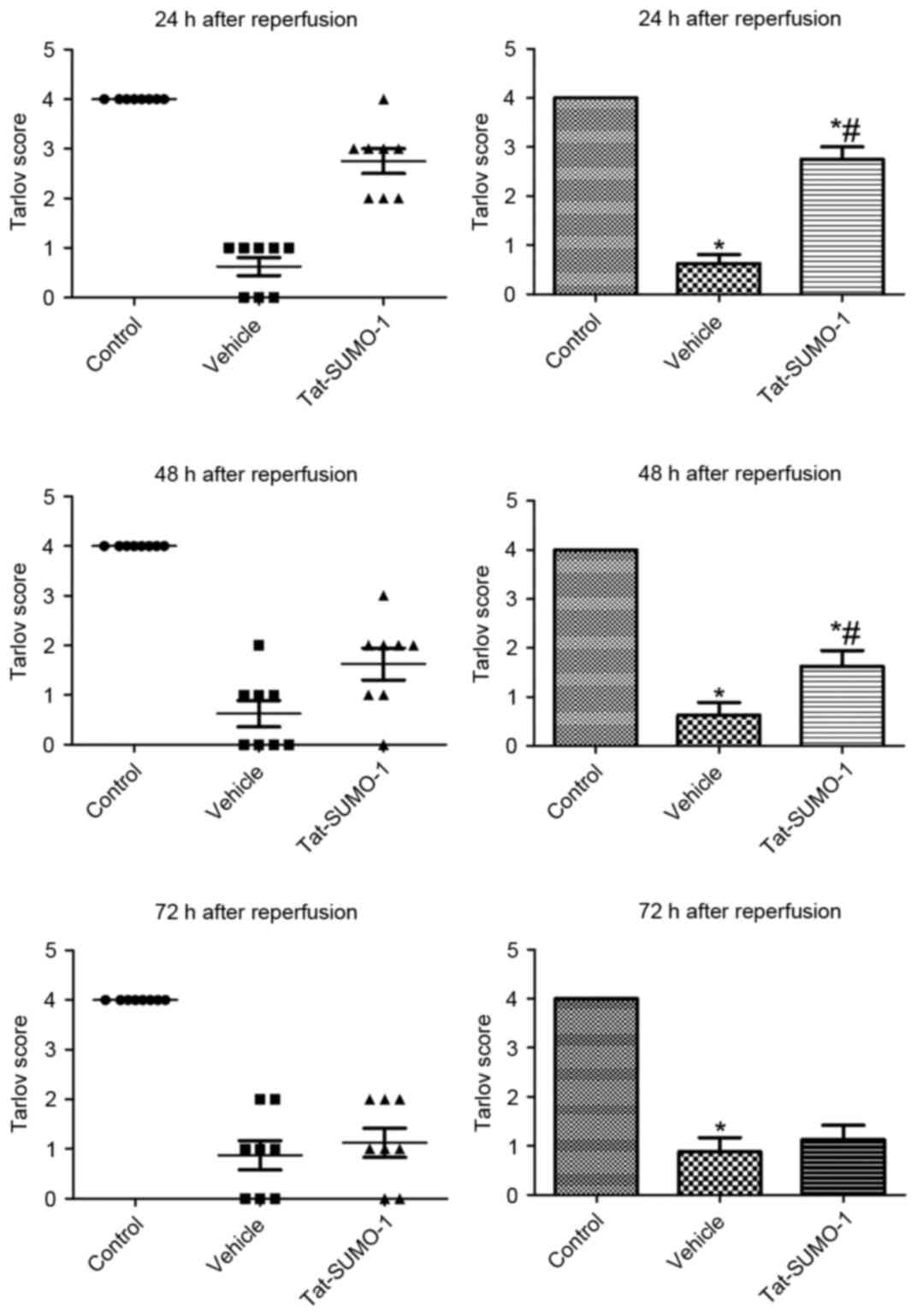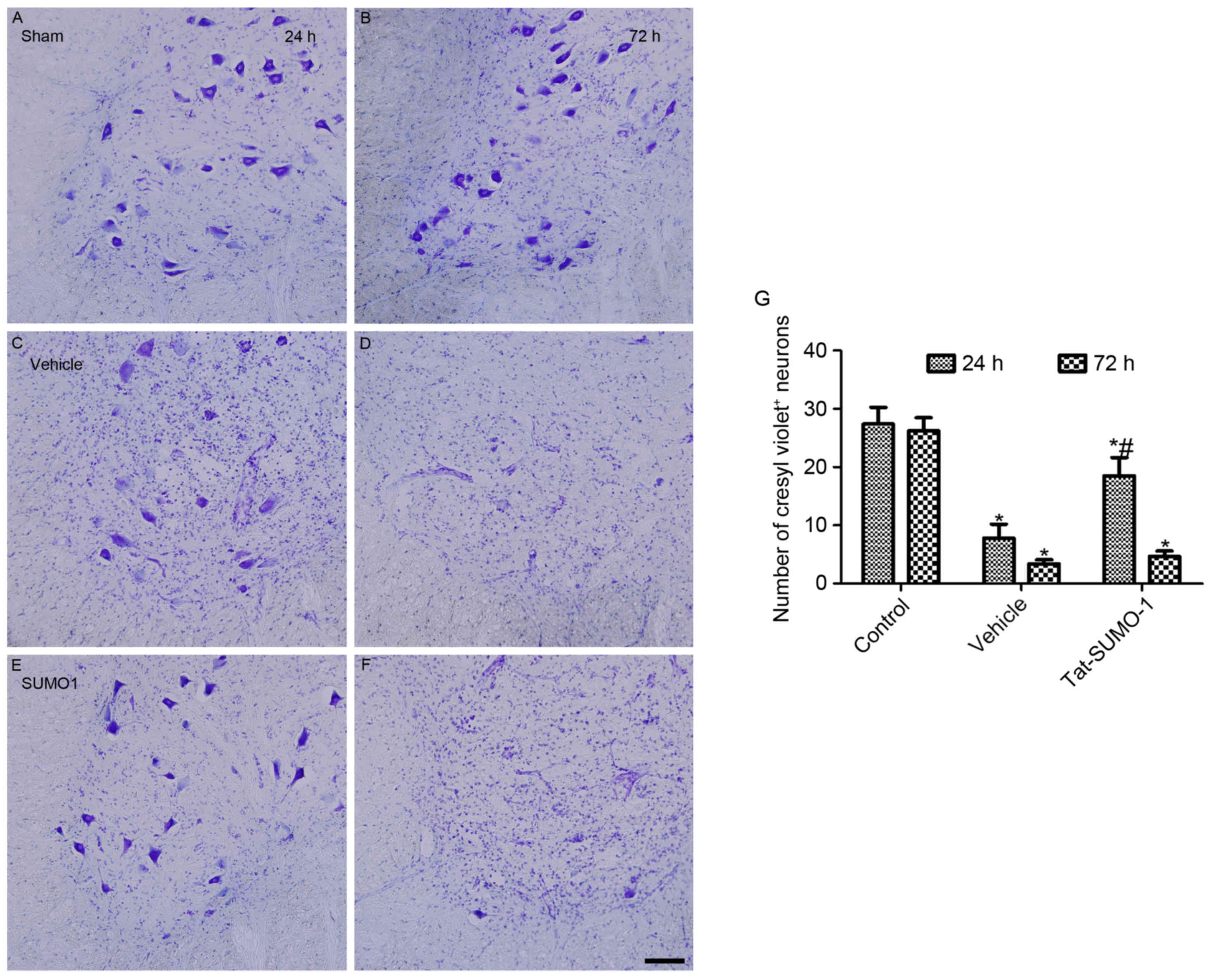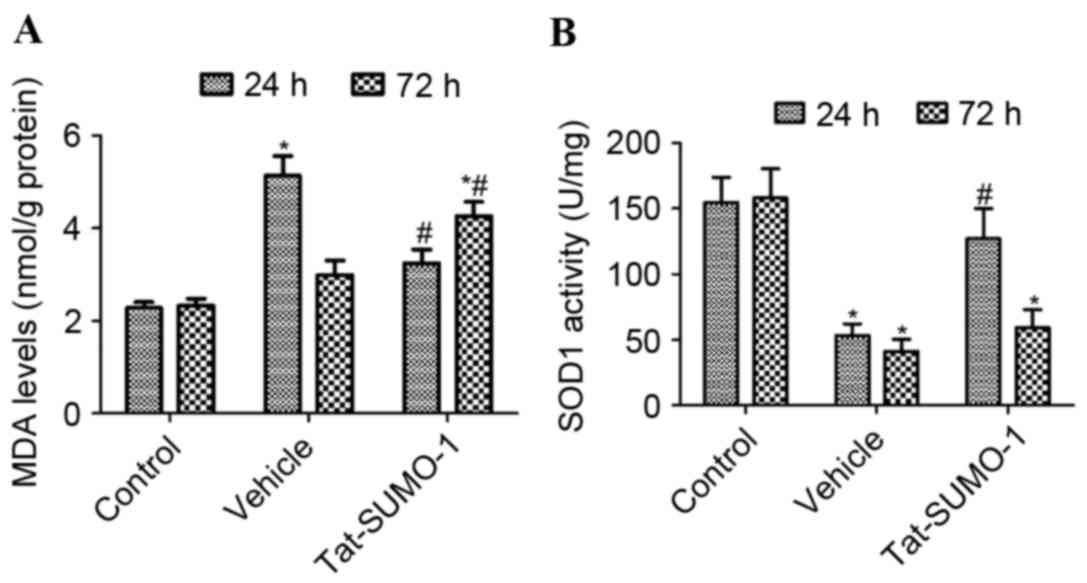|
1
|
Schepens MA, Heijmen RH, Ranschaert W,
Sonker U and Morshuis WJ: Thoracoabdominal aortic aneurysm repair:
Results of conventional open surgery. Eur J Vasc Endovasc Surg.
37:640–645. 2009. View Article : Google Scholar
|
|
2
|
Cambria RP, Davison JK, Carter C, Brewster
DC, Chang Y, Clark KA and Atamian S: Epidural cooling for spinal
cord protection during thoracoabdominal aneurysm repair: A
five-year experience. J Vasc Surg. 31:1093–1102. 2000. View Article : Google Scholar
|
|
3
|
Coselli JS, LeMaire SA, Köksoy C,
Schmittling ZC and Curling PE: Cerebrospinal fluid drainage reduces
paraplegia after thoracoabdominal aortic aneurysm repair: Results
of a randomized clinical trial. J Vasc Surg. 35:631–639. 2002.
View Article : Google Scholar
|
|
4
|
Safi HJ, Miller CC III, Huynh TT, Estrera
AL, Porat EE, Winnerkvist AN, Allen BS, Hassoun HT and Moore FA:
Distal aortic perfusion and cerebrospinal fluid drainage for
thoracoabdominal and descending thoracic aortic repair: Ten years
of organ protection. Ann Surg. 238:372–381. 2003.
|
|
5
|
Cimarosti H, Lindberg C, Bomholt SF, Rønn
LC and Henley JM: Increased protein SUMOylation following focal
cerebral ischemia. Neuropharmacology. 54:280–289. 2008. View Article : Google Scholar
|
|
6
|
Yang W, Sheng H, Warner DS and Paschen W:
Transient focal cerebral ischemia induces a dramatic activation of
small ubiquitin-like modifier conjugation. J Cereb Blood Flow
Metab. 28:892–896. 2008. View Article : Google Scholar
|
|
7
|
Lee YJ and Hallenbeck JM: SUMO and
ischemic tolerance. Neuromolecular Med. 15:771–781. 2013.
View Article : Google Scholar
|
|
8
|
Silveirinha V, Stephens GJ and Cimarosti
H: Molecular targets underlying SUMO-mediated neuroprotection in
brain ischemia. J Neurochem. 127:580–591. 2013. View Article : Google Scholar
|
|
9
|
Wang Z, Wang R, Sheng H, Sheng SP, Paschen
W and Yang W: Transient ischemia induces massive nuclear
accumulation of SUMO2/3-conjugated proteins in spinal cord neurons.
Spinal Cord. 51:139–143. 2013. View Article : Google Scholar
|
|
10
|
Yang W and Paschen W: SUMO proteomics to
decipher the SUMO-modified proteome regulated by various diseases.
Proteomics. 15:1181–1191. 2015. View Article : Google Scholar
|
|
11
|
Zhang FP, Mikkonen L, Toppari J, Palvimo
JJ, Thesleff I and Jänne OA: Sumo-1 function is dispensable in
normal mouse development. Mol Cell Biol. 28:5381–5390. 2008.
View Article : Google Scholar :
|
|
12
|
Lee YJ, Mou Y, Maric D, Klimanis D, Auh S
and Hallenbeck JM: Elevated global SUMOylation in Ubc9 transgenic
mice protects their brains against focal cerebral ischemic damage.
PLoS One. 6:e258522011. View Article : Google Scholar :
|
|
13
|
Hochrainer K, Jackman K, Anrather J and
Iadecola C: Reperfusion rather than ischemia drives the formation
of ubiquitin aggregates after middle cerebral artery occlusion.
Stroke. 43:2229–2235. 2012. View Article : Google Scholar :
|
|
14
|
Cimarosti H, Ashikaga E, Jaafari N,
Dearden L, Rubin P, Wilkinson KA and Henley JM: Enhanced
SUMOylation and SENP-1 protein levels following oxygen and glucose
deprivation in neurones. J Cereb Blood Flow Metab. 32:17–22. 2012.
View Article : Google Scholar
|
|
15
|
Kilic E, Kilic U and Hermann DM: TAT
fusion proteins against ischemic stroke: Current status and future
perspectives. Front Biosci. 11:1716–1721. 2006. View Article : Google Scholar
|
|
16
|
Fonseca SB, Pereira MP and Kelley SO:
Recent advances in the use of cell-penetrating peptides for medical
and biological applications. Adv Drug Deliv Rev. 61:953–964. 2009.
View Article : Google Scholar
|
|
17
|
Stalmans S, Bracke N, Wynendaele E,
Gevaert B, Peremans K, Burvenich C, Polis I and De Spiegeleer B:
Cell-penetrating peptides selectively cross the blood-brain barrier
in vivo. PLoS One. 10:e01396522015. View Article : Google Scholar :
|
|
18
|
Eum WS, Kim DW, Hwang IK, Yoo KY, Kang TC,
Jang SH, Choi HS, Choi SH, Kim YH, Kim SY, et al: In vivo protein
transduction: Biologically active intact pep-1-superoxide dismutase
fusion protein efficiently protects against ischemic insult. Free
Radic Biol Med. 37:1656–1669. 2004. View Article : Google Scholar
|
|
19
|
Kim W, Kim DW, Jeong HJ, Yoo DY, Jung HY,
Nam SM, Kim JH, Choi JH, Won MH, Yoon YS, et al: Tat-DJ-1 protects
neurons from ischemic damage in the ventral horn of rabbit spinal
cord via increasing antioxidant levels. Neurochem Res. 39:187–193.
2014. View Article : Google Scholar
|
|
20
|
DeGirolami U and Zivin JA: Neuropathology
of experimental spinal cord ischemia in the rabbit. J Neuropathol
Exp Neurol. 41:129–149. 1982. View Article : Google Scholar
|
|
21
|
Weir CJ, Zivin JA and Lyden PD:
Inter-relationships between spinal cord blood flow, neuronal death
and neurological function in rabbit spinal cord ischemia. Brain
Res. 946:43–51. 2002. View Article : Google Scholar
|
|
22
|
National Research Council, . Guide for the
Care and Use of Laboratory Animals. 7th. National Academy Press;
Washington DC: 1996
|
|
23
|
Kwon HY, Eum WS, Jang HW, Kang JH, Ryu J,
Lee B Ryong, Jin LH, Park J and Choi SY: Transduction of Cu,
Zn-superoxide dismutase mediated by an HIV-1 Tat protein basic
domain into mammalian cells. FEBS Lett. 485:163–167. 2000.
View Article : Google Scholar
|
|
24
|
Bradford MA: A rapid and sensitive method
for the quantification of microgram quantities of protein utilizing
the principle of protein-dye binding. Anal Biochem. 72:248–254.
1976. View Article : Google Scholar
|
|
25
|
Kiyoshima T, Fukuda S, Matsumoto M, Iida
Y, Oka S, Nakakimura K and Sakabe T: Lack of evidence for apoptosis
as a cause of delayed onset paraplegia after spinal cord ischemia
in rabbits. Anesth Analg. 96:839–846. 2003.
|
|
26
|
Murakami H, Tsukube T, Kawanishi Y and
Okita Y: Transcranial myogenic motor-evoked potentials after
transient spinal cord ischemia predicts neurologic outcome in
rabbits. J Vasc Surg. 39:207–213. 2004. View Article : Google Scholar
|
|
27
|
Tarlov IM: Spinal cord compression;
mechanism of paralysis and treatment. Thomas CC: Springfield,
Illinois: pp. 1471957
|
|
28
|
Jacobs TP, Kempski O, McKinley D, Dutka
AJ, Hallenbeck JM and Feuerstein G: Blood flow and vascular
permeability during motor dysfunction in a rabbit model of spinal
cord ischemia. Stroke. 23:367–373. 1992. View Article : Google Scholar
|
|
29
|
Huang Y, Xie K, Li J, Xu N, Gong G, Wang
G, Yu Y, Dong H and Xiong L: Beneficial effects of hydrogen gas
against spinal cord ischemia-reperfusion injury in rabbits. Brain
Res. 1378:125–136. 2011. View Article : Google Scholar
|
|
30
|
Moore WM Jr and Hollier LH: The influence
of severity of spinal cord ischemia in the etiology of
delayed-onset paraplegia. Ann Surg. 213:427–432. 1991. View Article : Google Scholar :
|
|
31
|
Wisselink W, Patetsios P, Panetta TF,
Ramirez JA, Rodino W, Kirwin JD and Zikria BA: Medium molecular
weight pentastarch reduces reperfusion injury by decreasing
capillary leak in an animal model of spinal cord ischemia. J Vasc
Surg. 27:109–116. 1998. View Article : Google Scholar
|
|
32
|
Shao R, Zhang FP, Tian F, Friberg P
Anders, Wang X, Sjöland H and Billig H: Increase of SUMO-1
expression in response to hypoxia: Direct interaction with
HIF-1alpha in adult mouse brain and heart in vivo. FEBS Lett.
569:293–300. 2004. View Article : Google Scholar
|
|
33
|
Saitoh H and Hinchey J: Functional
heterogeneity of small ubiquitin-related protein modifiers SUMO-1
versus SUMO-2/3. J Biol Chem. 275:6252–6258. 2000. View Article : Google Scholar
|
|
34
|
Lee YJ, Castri P, Bembry J, Maric D, Auh S
and Hallenbeck JM: SUMOylation participates in induction of
ischemic tolerance. J Neurochem. 109:257–267. 2009. View Article : Google Scholar :
|
|
35
|
Kho C, Lee A, Jeong D, Oh JG, Chaanine AH,
Kizana E, Park WJ and Hajjar RJ: SUMO1-dependent modulation of
SERCA2a in heart failure. Nature. 477:601–605. 2011. View Article : Google Scholar :
|
|
36
|
Tilemann L, Lee A, Ishikawa K, Aguero J,
Rapti K, Santos-Gallego C, Kohlbrenner E, Fish KM, Kho C and Hajjar
RJ: SUMO-1 gene transfer improves cardiac function in a
large-animal model of heart failure. Sci Transl Med.
5:211ra1592013. View Article : Google Scholar
|
|
37
|
Bossis G and Melchior F: Regulation of
SUMOylation by reversible oxidation of SUMO conjugating enzymes.
Mol Cell. 21:349–357. 2006. View Article : Google Scholar
|
|
38
|
Kim W, Kim DW, Yoo DY, Chung JY, Hwang IK,
Won MH, Choi SY, Jeon SW, Jeong JH, Hwang HS and Moon SM:
Neuroprotective effects of PEP-1-Cu, Zn-SOD against ischemic
neuronal damage in the rabbit spinal cord. Neurochem Res.
37:307–313. 2012. View Article : Google Scholar
|
|
39
|
Gürer B, Kertmen H, Kasim E, Yilmaz ER,
Kanat BH, Sargon MF, Arikok AT, Ergüder BI and Sekerci Z:
Neuroprotective effects of testosterone on ischemia/reperfusion
injury of the rabbit spinal cord. Injury. 46:240–248. 2015.
View Article : Google Scholar
|
|
40
|
Jung HY, Kim DW, Yim HS, Yoo DY, Kim JW,
Won MH, Yoon YS, Choi SY and Hwang IK: Heme oxygenase-1 protects
neurons from ischemic damage by upregulating expression of Cu,
Zn-superoxide dismutase, catalase, and brain-derived neurotrophic
factor in the rabbit spinal cord. Neurochem Res. 41:869–879. 2016.
View Article : Google Scholar
|
|
41
|
Kim HJ, Yun J, Lee J, Hong H, Jeong J, Kim
E, Bae YS and Lee KJ: SUMO1 attenuates stress-induced ROS
generation by inhibiting NADPH oxidase 2. Biochem Biophys Res
Commun. 410:555–562. 2011. View Article : Google Scholar
|
|
42
|
Pandey D, Chen F, Patel A, Wang CY,
Dimitropoulou C, Patel VS, Rudic RD, Stepp DW and Fulton DJ: SUMO1
negatively regulates reactive oxygen species production from NADPH
oxidases. Arterioscler Thromb Vasc Biol. 31:1634–1642. 2011.
View Article : Google Scholar :
|
|
43
|
Guo C, Wei Q, Su Y and Dong Z: SUMOylation
occurs in acute kidney injury and plays a cytoprotective role.
Biochim Biophys Acta. 1852:482–489. 2015. View Article : Google Scholar
|
|
44
|
Huang Y, Su Z, Li Y, Zhang Q, Cui L, Su Y,
Ding C, Zhang M, Feng C, Tan Y, et al: Expression and purification
of glutathione transferase-small ubiquitin-related
modifier-metallothionein fusion protein and its neuronal and
hepatic protection against D-galactose-induced oxidative damage in
mouse model. J Pharmacol Exp Ther. 329:469–478. 2009. View Article : Google Scholar
|












